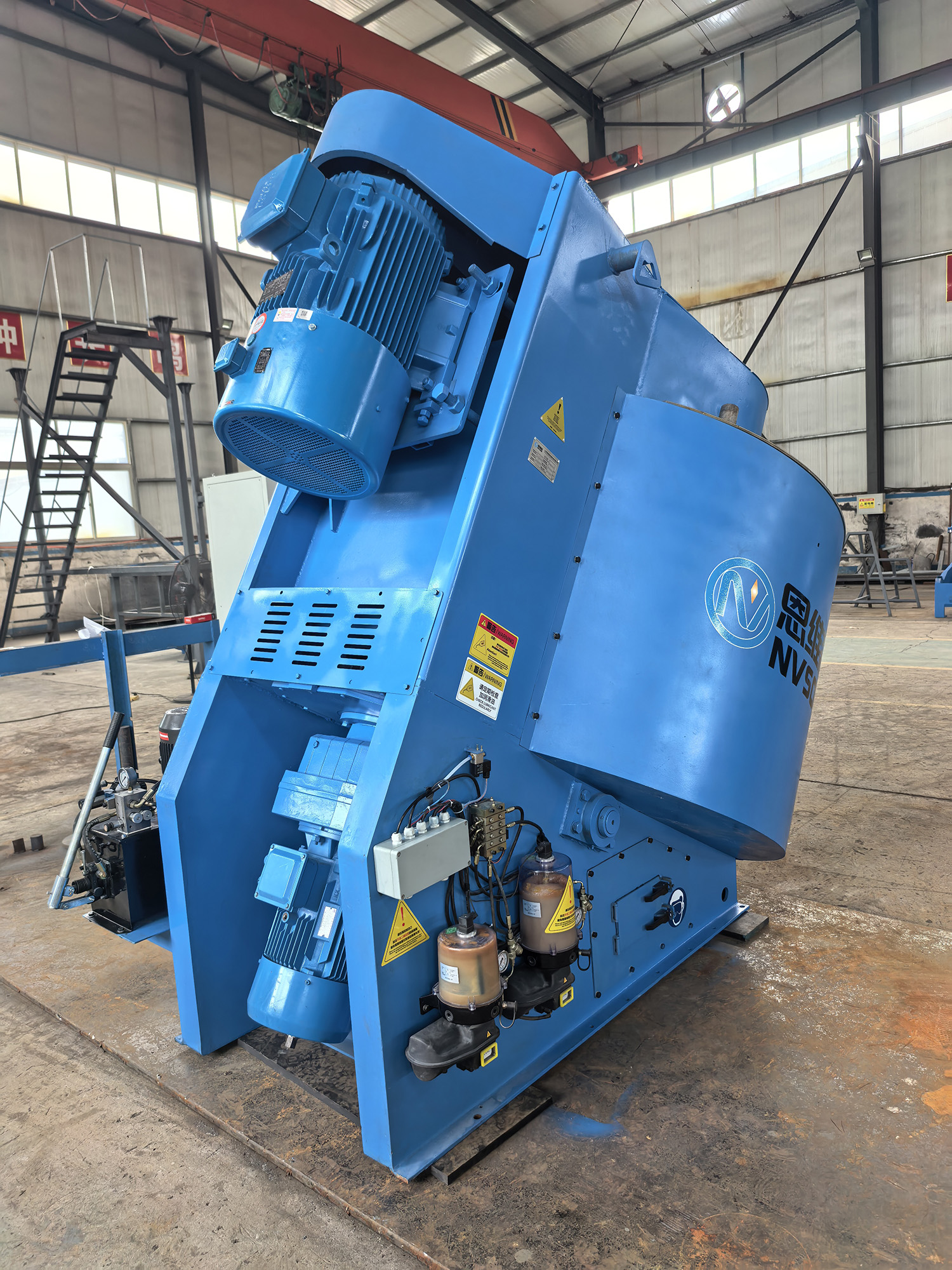In industrial production, granulation is a key process that converts powdery, pasty, and other materials into pellets of specific shapes. It is widely used in chemical, pharmaceutical, food, feed, and other industries. However, for a long time, traditional granulation equipment has had insurmountable pain points that restrict the quality of pellet products and production efficiency. Today, the emergence of tilted mixing granulators has achieved a comprehensive innovation from design principles to functional implementation, successfully solving traditional problems and ensuring more uniform material mixing and controllable stable pellet quality.
I. Three Core Pain Points of Traditional Granulation Equipment
Traditional granulation mainly relies on horizontal or vertical fixed-structure equipment. In practical applications, the limitations of these devices have gradually become prominent, acting as "stumbling blocks" in production:
- Uneven Mixing, Large Fluctuations in Pellet Quality: The mixing chamber of traditional equipment has a fixed shape, which easily creates "dead zones" during material mixing—materials near the chamber wall or bottom cannot be fully agitated, leading to uneven distribution of material components. Taking the pharmaceutical industry as an example, if Chinese medicine powders are not sufficiently mixed, the difference in the content of active ingredients in the produced pellets can reach more than 10%, directly affecting the efficacy and safety of drugs; in the food industry, uneven mixing of seasoning powders causes pellets to taste sometimes salty and sometimes light, reducing product quality.
- Poor Material Adaptability, Prone to Caking and Blockage: Faced with materials of different properties, traditional equipment obviously has the problem of "incompatibility". When processing high-viscosity pasty materials, the materials are easy to adhere to the stirring paddles and chamber walls, forming lumps. This not only affects the mixing effect but also may block the discharge port, causing production interruptions; when processing light powdery materials, the powder is easy to fly, resulting in material loss and pollution of the production environment.
- Unstable Pellet Formation, Low Qualification Rate: Due to uneven mixing and insufficient material processing capacity, the pellets produced by traditional equipment often have problems such as inconsistent size and large differences in hardness. In the feed industry, overly hard pellets make it difficult for livestock and poultry to chew, while overly soft pellets are easy to break and generate dust, increasing transportation and storage costs; in the chemical industry, unstable pellet shape may also affect the efficiency of subsequent reactions, resulting in substandard product performance.
II. Tilted Granulation Equipment: Resolving Pain Points Through Design Innovation
The reason why tilted mixing granulators can solve the drawbacks of traditional equipment lies in their innovative "tilted structure design" and "integrated functional integration", which fundamentally optimize the material processing process:
1. Tilted Mixing Chamber: Eliminating Mixing Dead Zones, Increasing Uniformity by Over 40%
The core component of the tilted equipment—the mixing chamber—can flexibly adjust the tilt angle between 15° and 45° according to material properties. Cooperating with a double-helix or paddle-type stirring system, it forms a "three-dimensional cyclic stirring" mode. When the equipment is in operation, materials in the tilted chamber not only move circularly with the stirring paddles but also roll up and down along the inclined surface of the chamber wall, realizing 360° dead-zone-free mixing. Dynamic simulation tests show that compared with traditional equipment, the material mixing uniformity of the tilted granulator can be increased by more than 40%, and the component deviation is controlled within 2%, ensuring stable pellet quality from the source.
2. Targeted Material Processing Design: Adapting to Multi-Scenario Needs
The tilted equipment has been finely optimized for the characteristics of different materials:
- When processing high-viscosity materials, the stirring paddles are coated with Teflon anti-adhesive coating to reduce material adhesion. At the same time, the tilted chamber can be tilted in the opposite direction after granulation to assist rapid material discharge and avoid residual caking;
- When processing light powders, the equipment is equipped with a sealed feeding system and a built-in dust removal device to prevent powder flying, increasing material utilization rate to over 98%;
- For composite materials containing fibers (such as feed and biomass pellets), the equipment can adjust the stirring speed and tilt angle to ensure uniform fiber dispersion, avoid tangling and agglomeration, and ensure a smooth granulation process.
3. Integrated Mixing-Granulation: Reducing Process Loss, Stabilizing Forming Quality
Traditional granulation requires three steps: "mixing - transfer - granulation". During the transfer process, materials are easily contaminated by the outside world, and the mixed state may be destroyed. The tilted equipment integrates mixing and granulation functions in the same chamber. After materials are uniformly mixed, they can be directly formed through the built-in granulation components without intermediate transfer. This design not only reduces production time by 30% but also avoids secondary material pollution and the decline in mixing degree. The size deviation of the produced pellets is controlled within 0.5mm, with uniform hardness, and the qualification rate is increased to over 99%.
III. Industrial Application Value of Tilted Equipment
At present, tilted mixing granulators have been applied in multiple industries to solve practical production problems for enterprises:
- In the pharmaceutical industry, a company used this equipment to produce Chinese medicine pellets. The fluctuation of active ingredient content decreased from ±8% to ±2%, meeting GMP certification standards and significantly improving the product pass rate;
- In the feed industry, a breeding enterprise used this equipment to process straw-soybean meal composite materials. The pellet breakage rate decreased from 15% to 3%, and the feed utilization rate increased by 10%;
- In the chemical industry, a company used this equipment to produce catalyst pellets. After the improvement of mixing uniformity, the catalyst reaction efficiency increased by 20%, reducing production costs.
Bid farewell to the pain points of traditional granulation, such as uneven mixing, difficult material processing, and fluctuating pellet quality. Tilted mixing granulators, with their innovative design and practical performance, provide efficient and stable granulation solutions for various industries. In the future, with further optimization of equipment technology, they will play a role in more segmented fields and help improve the quality and efficiency of industrial production.





